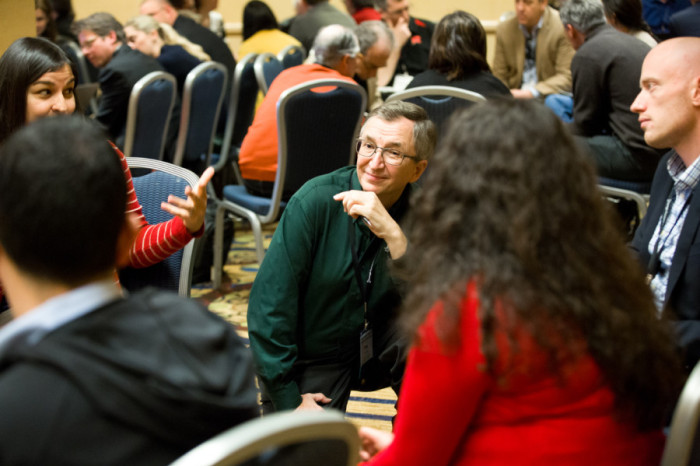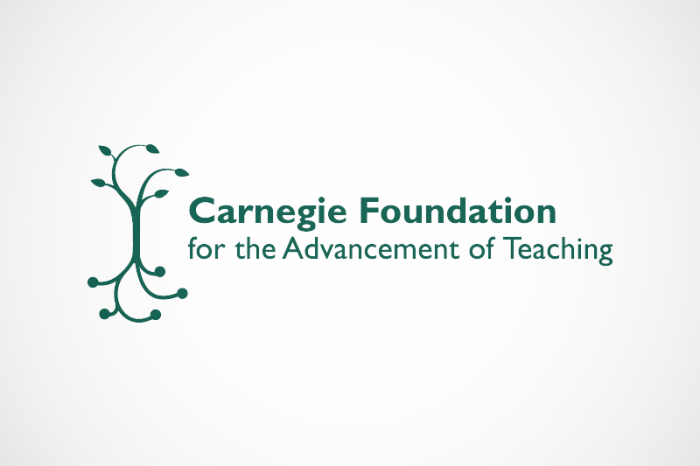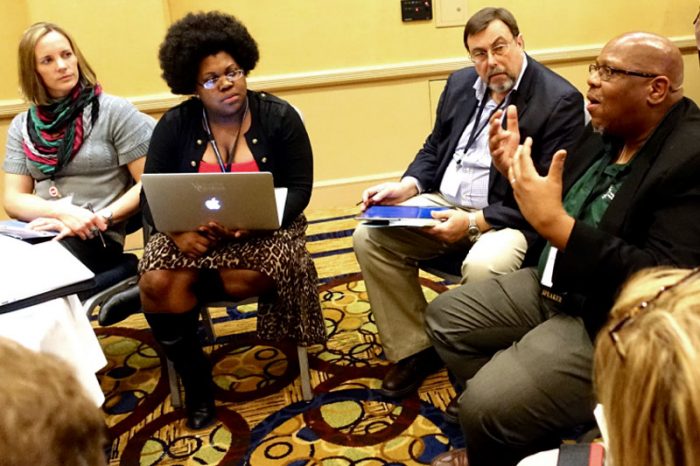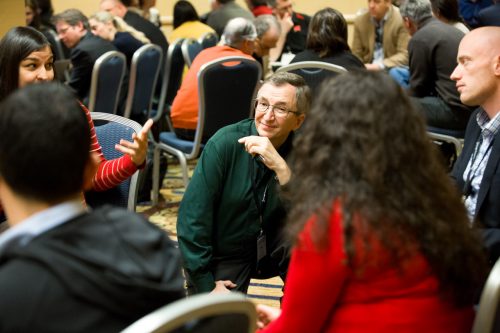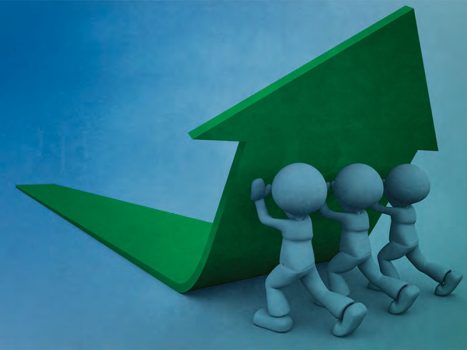Editor’s note: This is the second in a series of blog posts intended to highlight the main ideas of Learning to Improve and launch a conversation on how these ideas are being used within the education field.
If you asked around, the vast majority of educators would tell you that much of what they do focuses on improvement. Improving is at the heart of our profession.
As a teacher, if you asked me what I was doing when I was “working on improving,” I would have likely told you about setting goals for my students, reading books to get new ideas, discussing a student or a lesson with colleagues, and trying countless new things in my classroom on a daily basis. While all of these activities were important, I cannot confidently say how much my efforts translated into improvement for students. The things that I did figure out rarely traveled past the walls of my classroom. I have a couple well-tuned lessons in my file drawer if you’d ever like to use them.
Across the nation, thousands of educators at the classroom, school, and district levels are expending significant energy trying to improve—searching and trying new ideas in hopes of making things better. But what if we could move from trying to get better to getting good at getting better?
Getting good at getting better necessitates shifting from thinking of improvement as an intention to investing in formal methods to actually achieve it. As it turns out, there is a way of carrying out one’s work, called improvement science, that can be broadly helpful. As a science, it involves articulating theories of change and testing them. As an applied endeavor, it aims to both solve local problems and generate knowledge of value to other professionals. And it’s much more practical than how educators might typically think of science. It focuses directly on the everyday challenges that practitioners confront in their classrooms and schools.
What if we could move from trying to get better to getting good at getting better?
I remember my first contact with “improvement science” a couple of years after I left the classroom. I was touring the Institute for Healthcare Improvement and stumbled upon a group of healthcare professionals engaged in a year-long effort to learn improvement methods by applying them to solve a problem in their hospital, clinic, or operating room. A physician was trying to reduce the number of repeat visits to the Emergency Department. A nurse was working with his colleagues to improve patient satisfaction in their ward. Each had a goal that was practical and very specific. They knew what they wanted to happen but were now trying to figure out how to get it to happen with all the patients they worked with every day. The parallels to the improvement goals we have in our classrooms and schools were immediately apparent, only they had a method and set of tools to systematically build the know-how to get there. I immediately wondered—perhaps somewhat indignantly—why nobody told me there was an actual methodology for improvement.
The application of this methodology is organized around three big questions. (See the figure below.) The first encourages us to get clear about the specific problem we are trying to solve. The second demands some reasoned explanation about the particular changes to be attempted (given the problem we are trying to solve) and what we expect these changes to accomplish. Addressing these two questions press us to detail our thinking with sufficient specificity that others might understand what we are about and why. The third question—how will we know if the changes introduced are actually an improvement—encourages an empirical orientation. We tend to believe in the power of our own ideas; we need data to push back at us and challenge what we believe to be true.
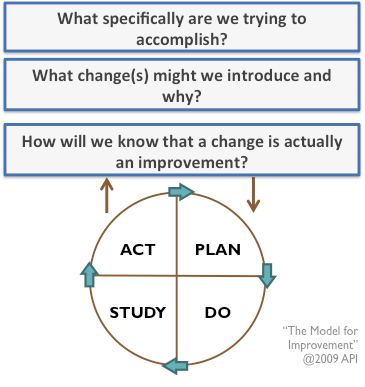
While these improvement questions can be formally addressed through different modes of inquiry, teachers will likely find the plan-do-study-act cycle as useful for organizing their learning-by-doing.
Each plan-do-study-act (PDSA) cycle is akin to a mini-experiment. It begins with articulating the change and recording predictions about what we expect will happen (plan); attempting the change and documenting what in fact did happen (do); comparing the results to the predictions (study); and then deciding on what to do next (act). In many instances, a PDSA cycle may not generate the results expected; but this failure to achieve predicted outcomes often provides clues as to what to try instead. This in turn becomes the basis for the next PDSA cycle—another mini-improvement experiment.
In working with teachers engaged in improvement research, they have found that this both builds on and is, at the same time, a significant departure from what they already do. The idea of inventing a change and trying it out quickly comes very naturally. The difference comes in the added discipline: getting clear on the change and the theory behind it, studying how and why things went differently than you thought they would, and taking the time to write this all down. This is new and may feel at first like a strange practice for many educators. It’s hard to believe that it makes a difference at first. Yet, just like scientific endeavors more generally, analytic thinking, systematic experimentation, and documentation are critical.
Simply trying to improve is not enough.
I recently taught an improvement science course to a group of educators with an improvement science expert that has worked across a wide variety of professions. We began the session—as he often does—by asking people to estimate how much of their job was dedicating to “improving.” He was astonished at the high percentages that educators reported. In many of the other settings that he has worked in, people thought it was someone else’s job to improve. This felt responsibly for improvement is a resource to leverage in our profession. At the same time, simply trying to improve is not enough.
Embracing improvement science means holding to two sentiments that can be difficult to engage simultaneously. Improvement—at all levels—requires that one’s best efforts must be joined to a disciplined method for learning how to improve. The energy to pursue change must couple with questioning and doubt about the veracity of one’s own ideas. Hope, discipline, and humility all roll into one. Therein lies the shift from trying to improve to getting better at getting better.
July 7, 2015
Since 2008, Carnegie has been working to find a better way of learning how to improve. We have learned a great deal by doing, including that this work is a continuous improvement task. We invite you to join in on this ongoing process.
July 28, 2015
To reach increasingly high academic demands, we must better support student engagement. In “Motivation Matters," writers Susan Headden and Sarah McKay define key terms, discuss research findings, and explain promising approaches to boosting student motivation.






